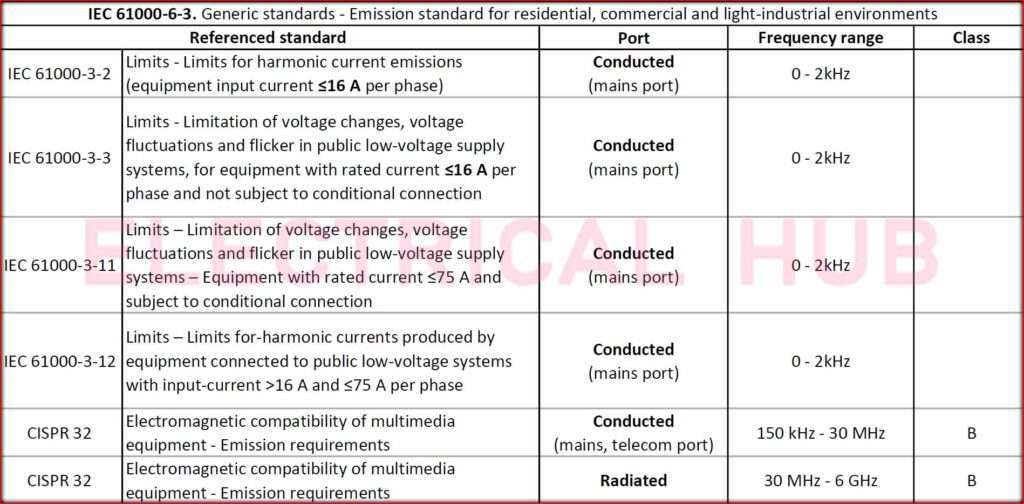IEC 61000-6 Standards: A Comprehensive Guide

IEC 61000-6 Standards, developed by the International Electrotechnical Commission (IEC), are a set of international standards that address electromagnetic compatibility (EMC). In essence, EMC ensures that electronic and electrical systems can operate effectively in their designated environments without causing or succumbing to interference.
Read More About

IEC 61000-6 Standards
Focus on Industrial Environments
IEC 61000-6 Standards specifically concentrate on providing guidelines for immunity requirements and test methods for equipment utilized in industrial settings. Industrial environments pose challenges due to the presence of diverse electronic devices and the potential for electromagnetic interference from sources like power lines and motors.
Immunity Levels and Testing
The standard outlines the levels of immunity that equipment should withstand and prescribes testing methods to ensure compliance. The primary objective is to guarantee that equipment functions reliably even when exposed to common electromagnetic disturbances encountered in industrial environments.
Importance for Manufacturers and Users
Adhering to standards like IEC 61000-6 Standards are critical for both manufacturers and users of industrial equipment. Compliance helps ensure that devices can operate effectively without being adversely affected by electromagnetic interference. Additionally, it minimizes the risk of causing interference to other equipment within the same environment.
Specific Applications Of IEC 61000-6 Standards
IEC 61000-6-8: Light-Industrial Equipment
IEC 61000-6-8 is applicable to light-industrial equipment meeting specific usage restrictions. This includes equipment defined as professional, professionally installed and maintained, and not intended for residential use. Alternatively, IEC 61000-6-3 applies to electrical and electronic equipment intended for use in commercial and light-industrial locations that do not meet these restrictions.

Examples of applicable locations include retail outlets, business premises, areas of public entertainment, places of worship, outdoor locations, general public areas, hospitals, educational institutions, public traffic areas, railway stations, public areas of airports, and specific common areas of buildings like basements, control rooms, electrical service areas, workshops, laboratories, and service centers.
IEC 61000-6-1: General Equipment Emission Standards
IEC 61000-6-1 applies to equipment without dedicated product standards or emission standards. It covers equipment intended for operation in residential locations (indoors and outdoors) and commercial, public, and light-industrial locations.
IEC 61000-6-2: Generic Immunity Levels for Industrial Environment
IEC 61000-6-2 is a generic standard for immunity in industrial environments, covering both indoor and outdoor settings. It applies to equipment without relevant dedicated product standards or product family emission standards.
IEC 61000-6-4: Generic Emission Limits for Industrial Environment
IEC 61000-6-4 is a generic standard for emissions in industrial environments, covering both indoor and outdoor settings. It applies to equipment not falling within the scope of IEC 61000-6-3 and lacks relevant dedicated product standards or product family emission standards.
IEC 61000-6-8: Emission Limits for Light-Industrial Environment
IEC 61000-6-8 is a generic standard for emissions in light-industrial environments, applying to light-industrial equipment meeting specific restrictions of use. If these restrictions are not met, IEC 61000-6-3 is applicable.
Conclusion
In conclusion, the IEC 61000-6 Standards play a crucial role in ensuring the electromagnetic compatibility of equipment in various environments. These standards provide clear guidelines, immunity levels, and testing methods, promoting the reliable and interference-free operation of electronic and electrical systems.
